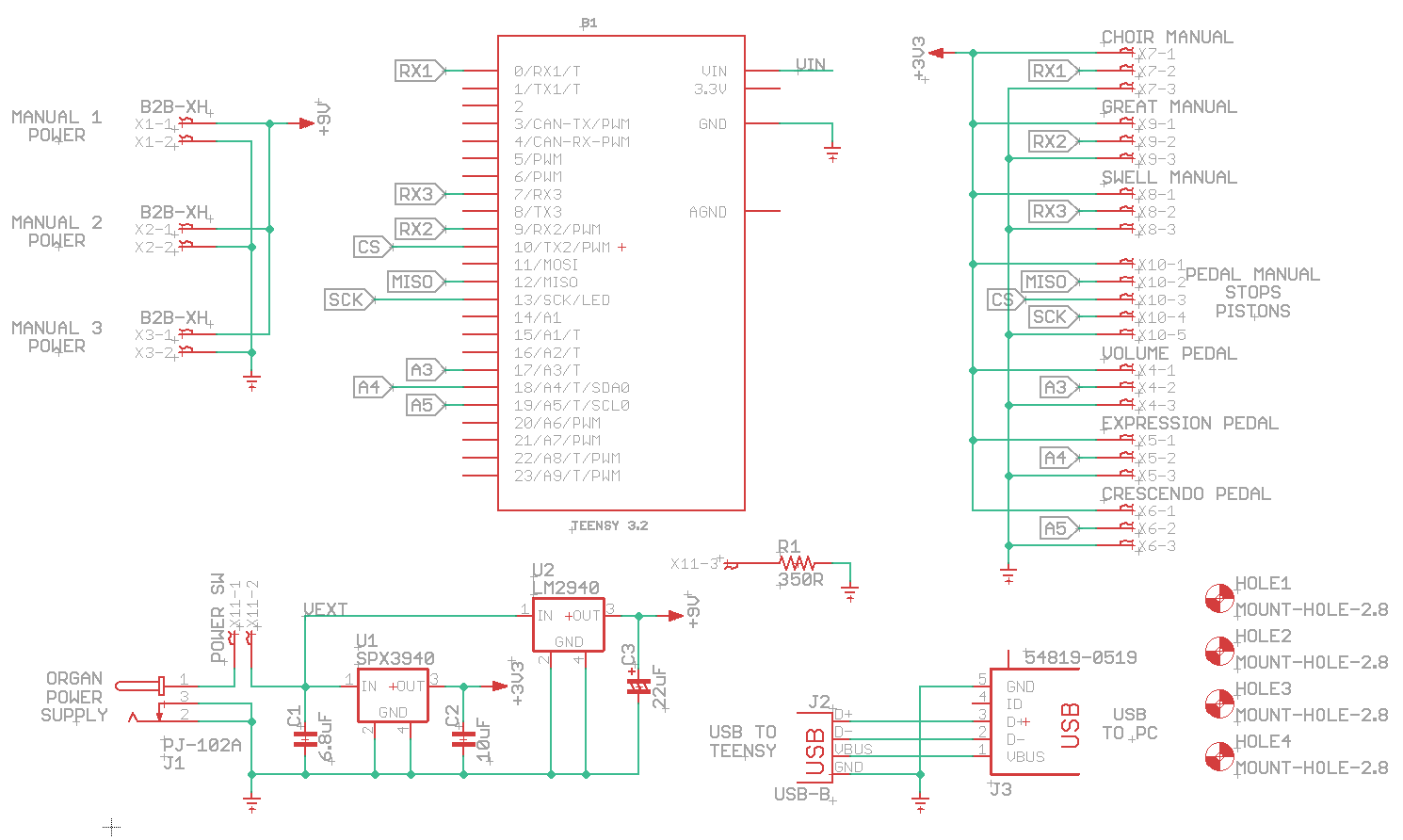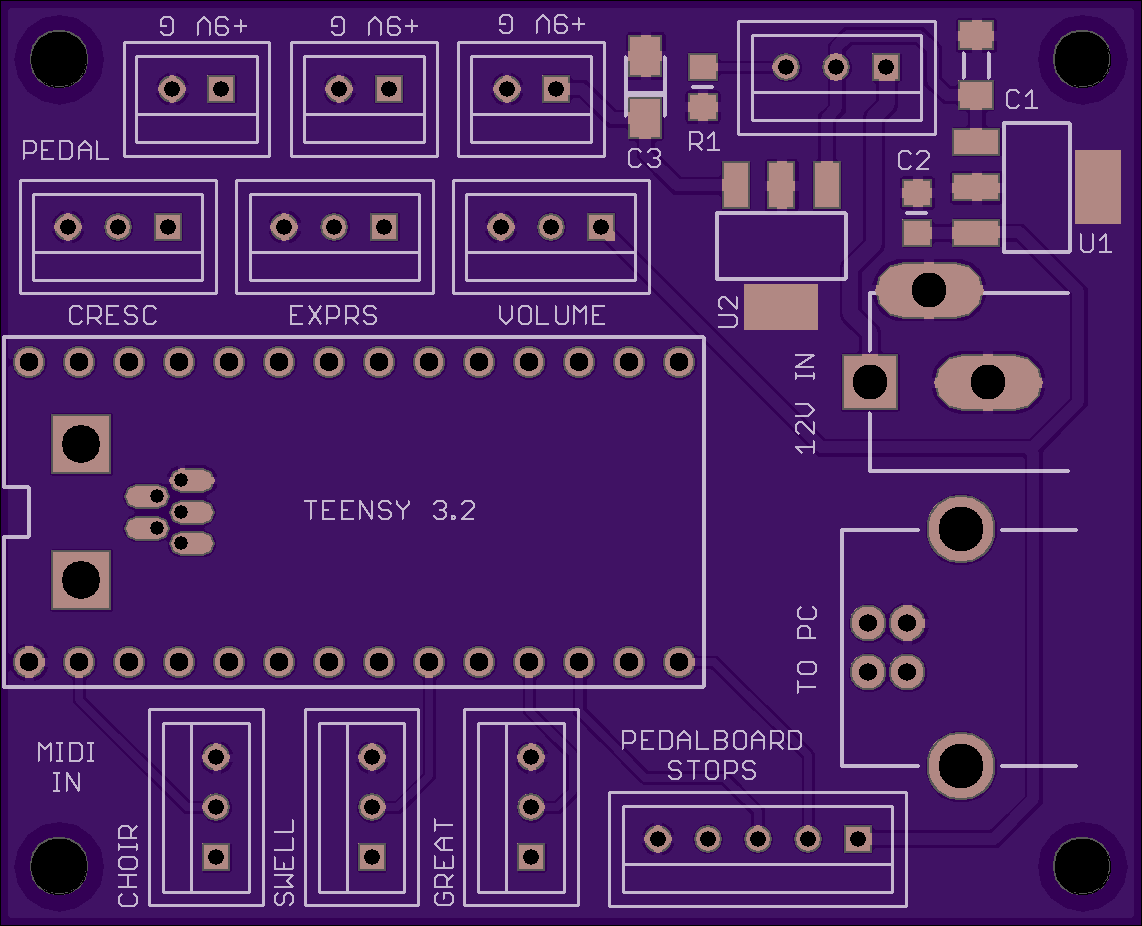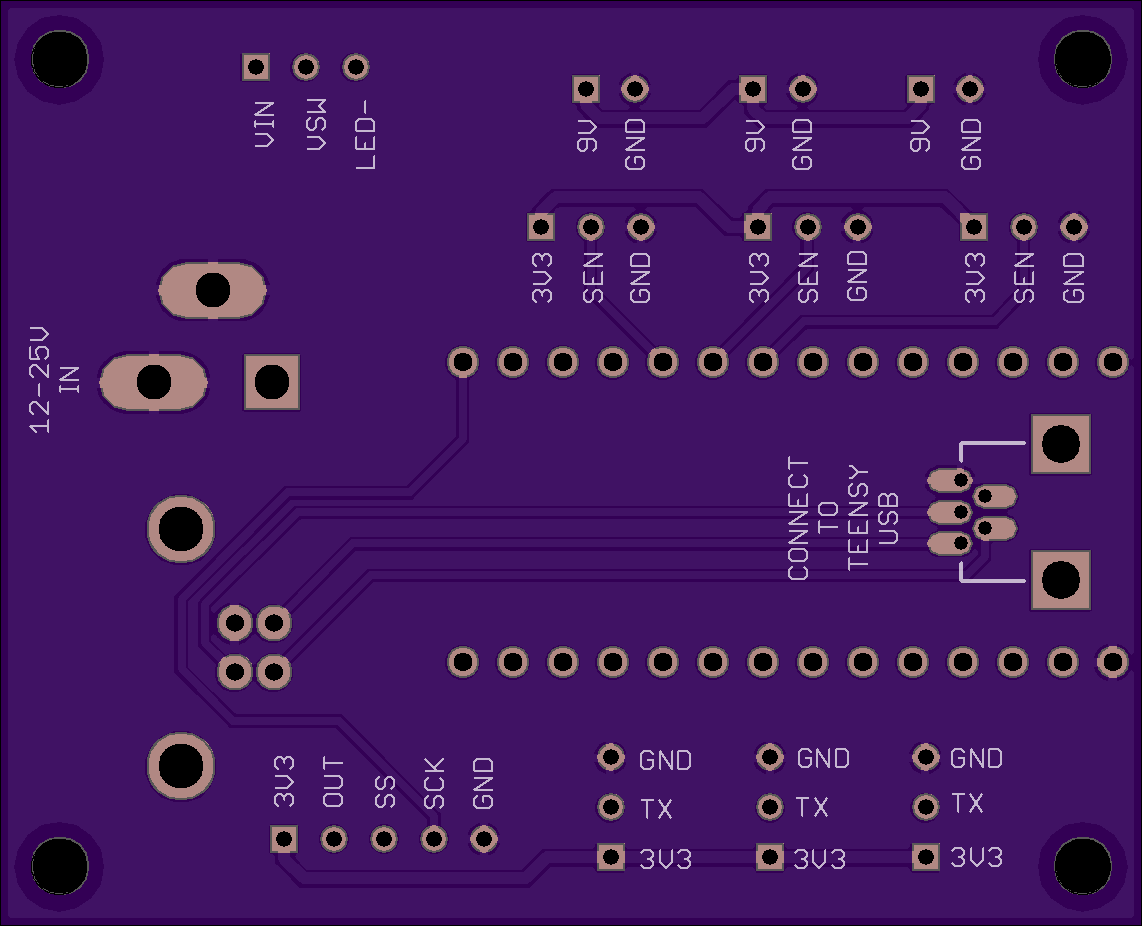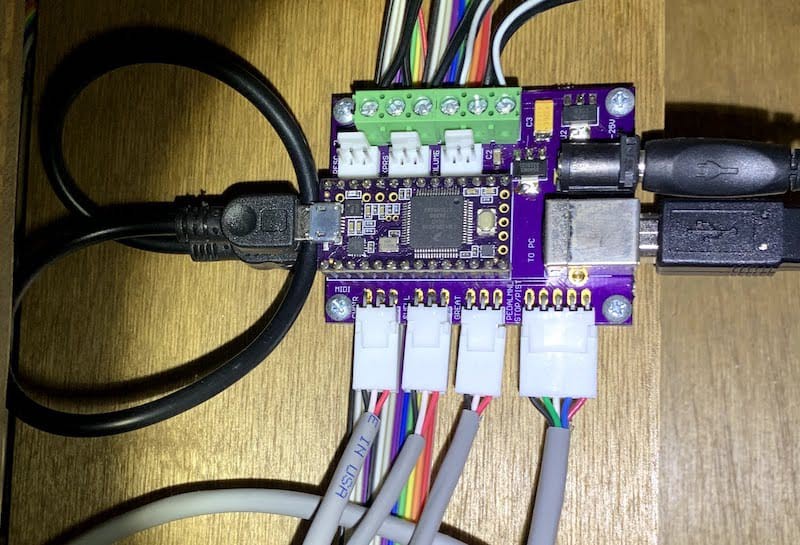This is the "main" module for the organ and serves several purposes:
- Houses the awesome Teensy 3.2 micro-controller (https://www.pjrc.com/store/teensy32.html) that handles all the processing & communication for the organ
- With external power provided by any 12V power brick, converts and supplies 3.3V to the Teensy and all switches, as well as 9V to the 3 MIDI keyboards.
- Allows for a small power indicator LED to be mounted in the console somewhere
- Allows for an external switch to be mounted to turn off power to the organ
- Central hub to connect all external modules to the Teensy
- Adds a durable USB Type B jack to connect to the Hauptwerk PC, linked to the Teensy via a mini-USB jumper cable connected to an additional mini-USB connector on the module. This allows for either a USB Type B or mini-USB cable to be used to connect to the the PC.
Three hardware serial ports on the Teensy are used to read the serialized MIDI input from the choir, great & swell manuals on pin 0 (RX1, 9 (RX2) & 7 (RX3).
The daisy-chained shift register modules are read via the SPI, pins 10 (CS), 12 (DIN) & 13 (SCK)
The great & swell expression pedals plus the crescendo pedal are read by analog pins 17 (A3), 18 (A4) & 19 (A5)
NOTE: Any references to VOLUME PEDAL refers to the great expression pedal, and EXPRESSION PEDAL refers to the swell expression pedal. My son corrected my ignorant terminology!

Also had these PCBs made at OSHpark.com. The final design:


And the finished item (using an earlier version of the module without the power switch & indicator) mounted inside the console:

 Johan Cronje
Johan Cronje
Discussions
Become a Hackaday.io Member
Create an account to leave a comment. Already have an account? Log In.